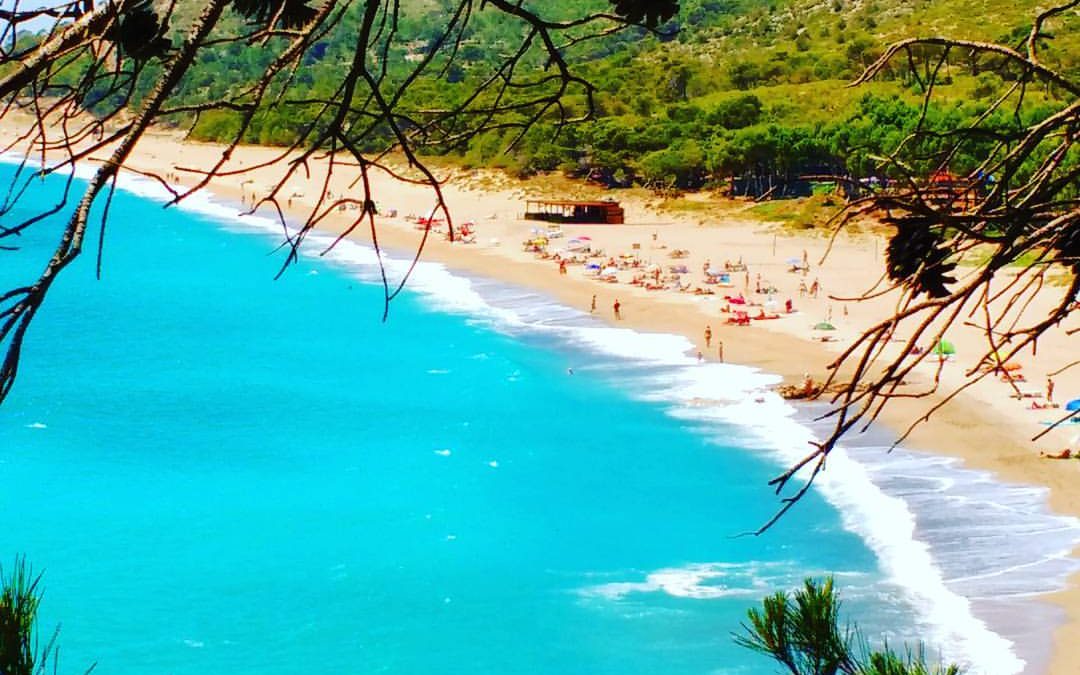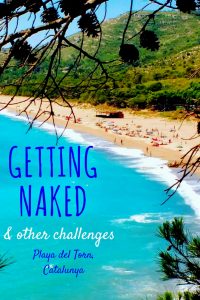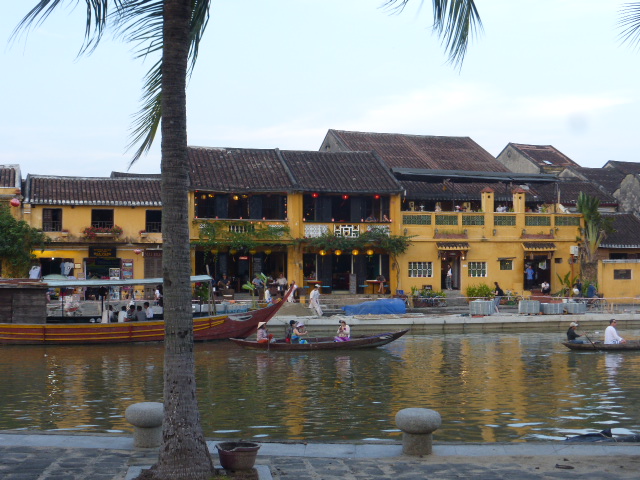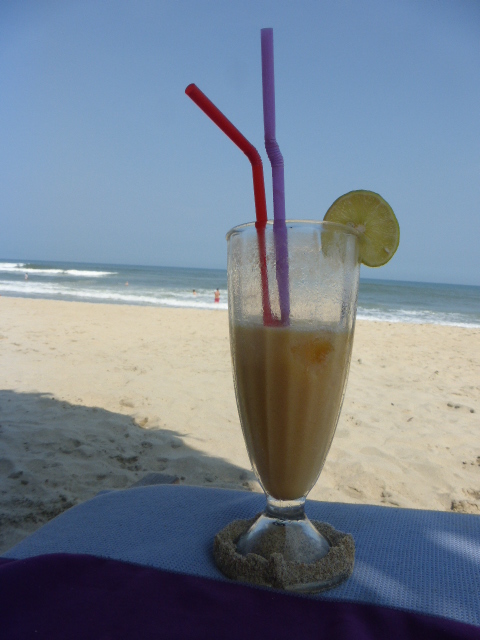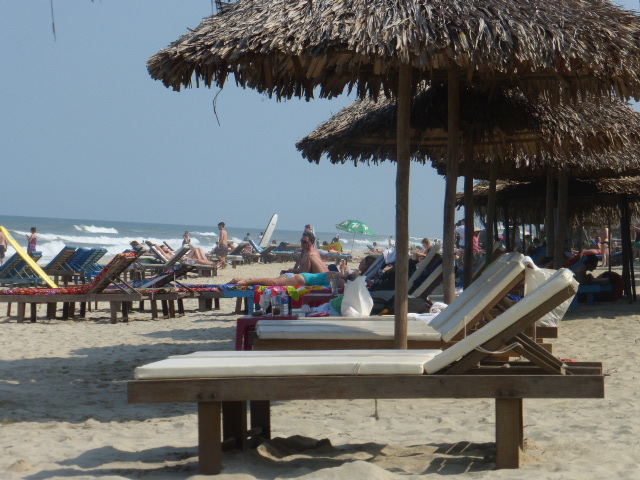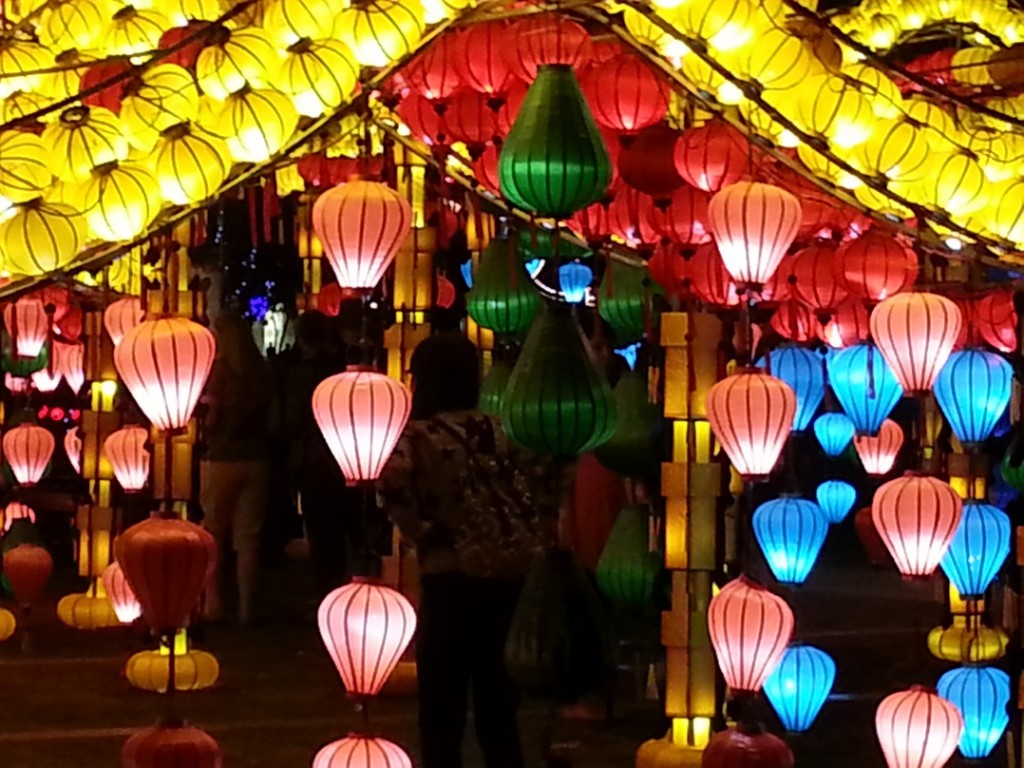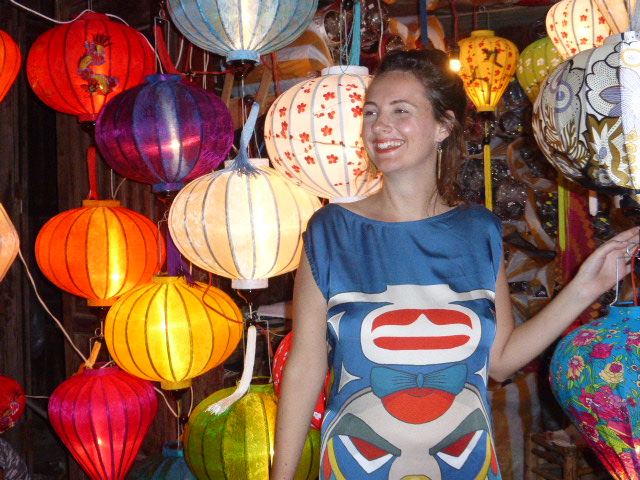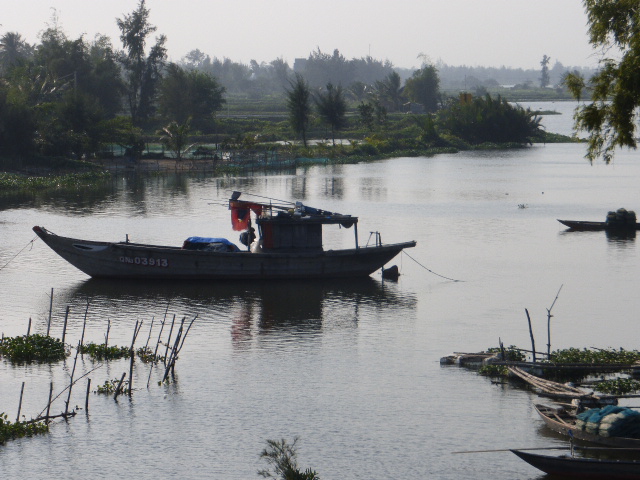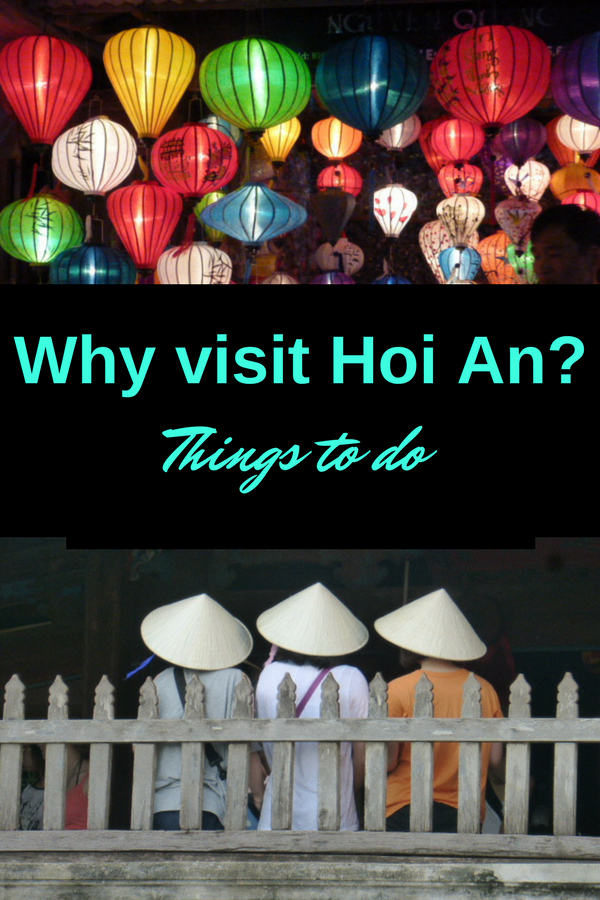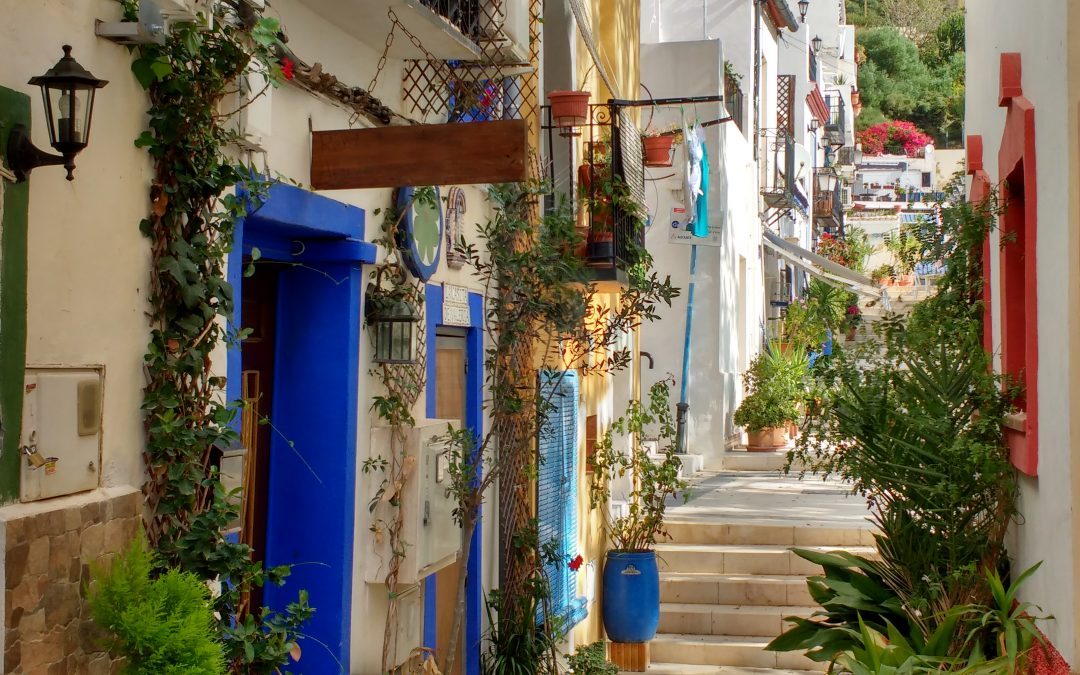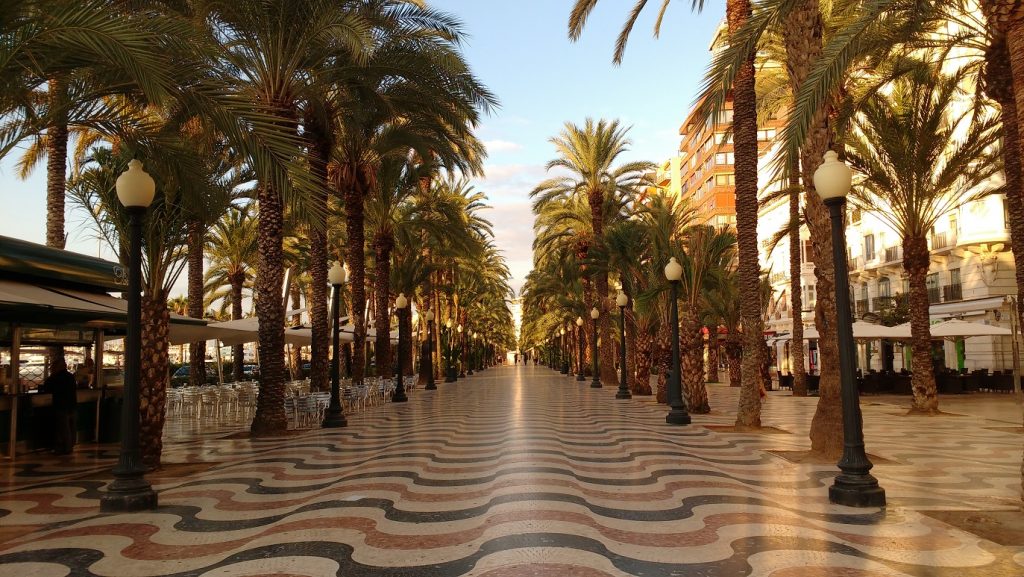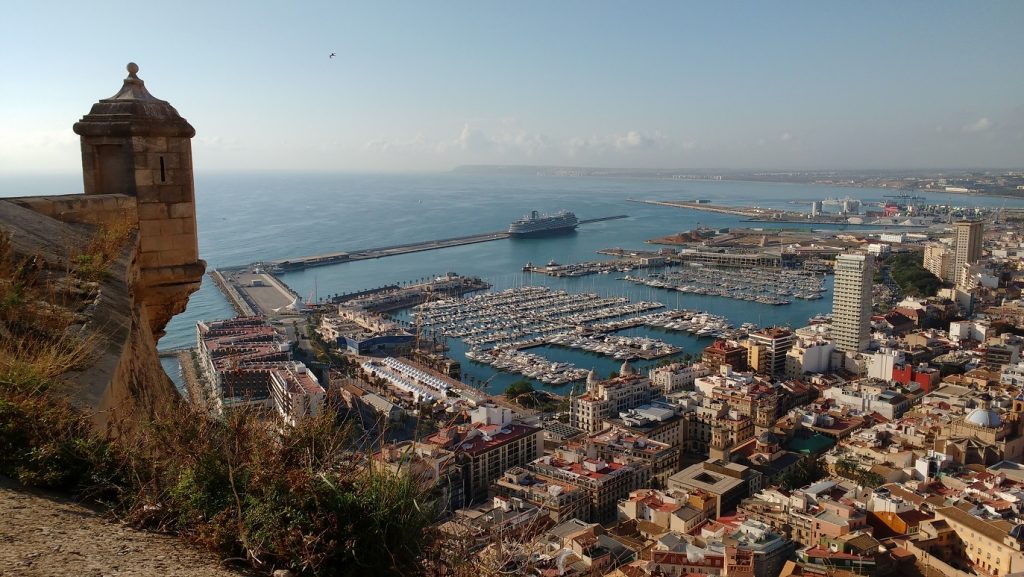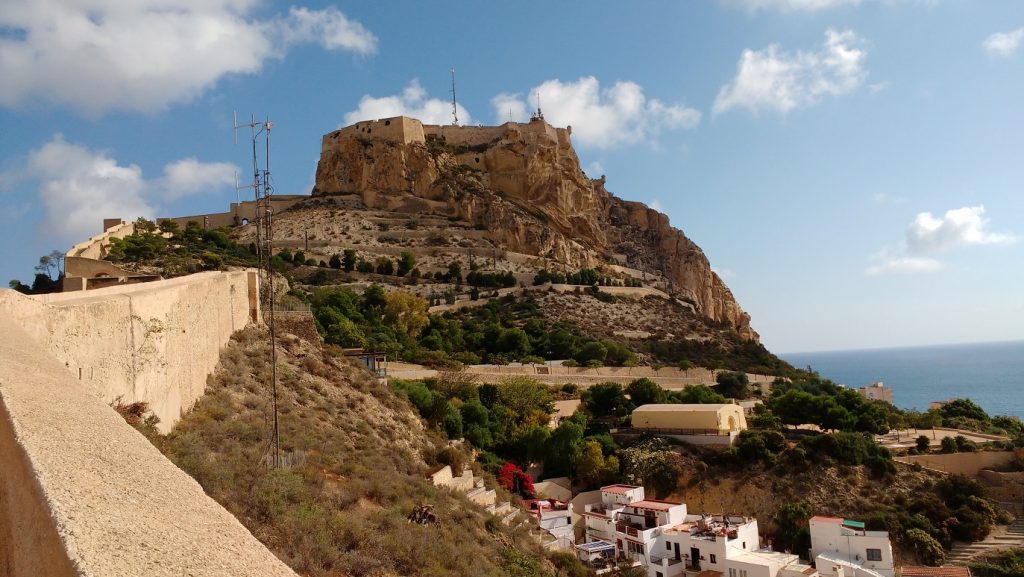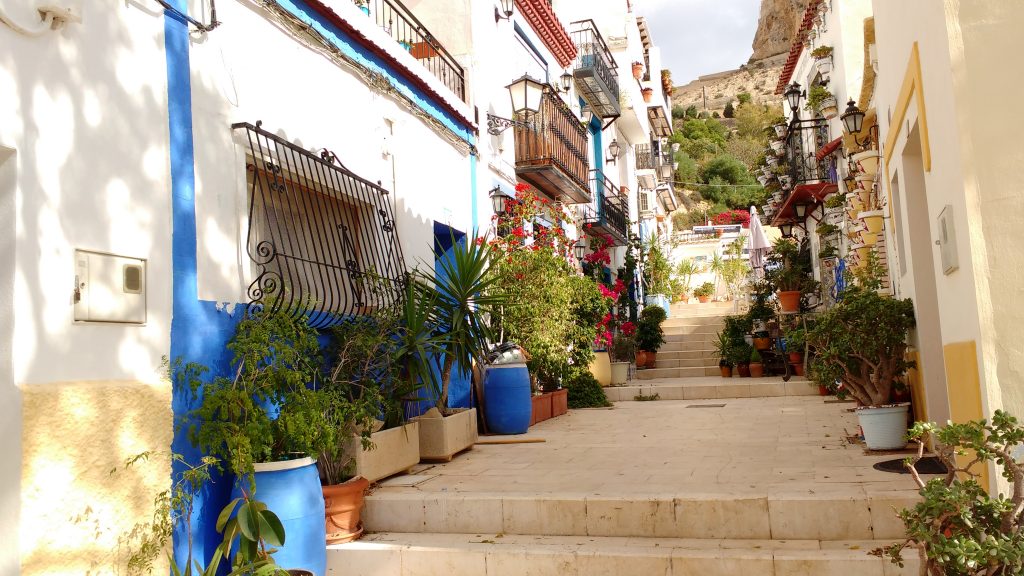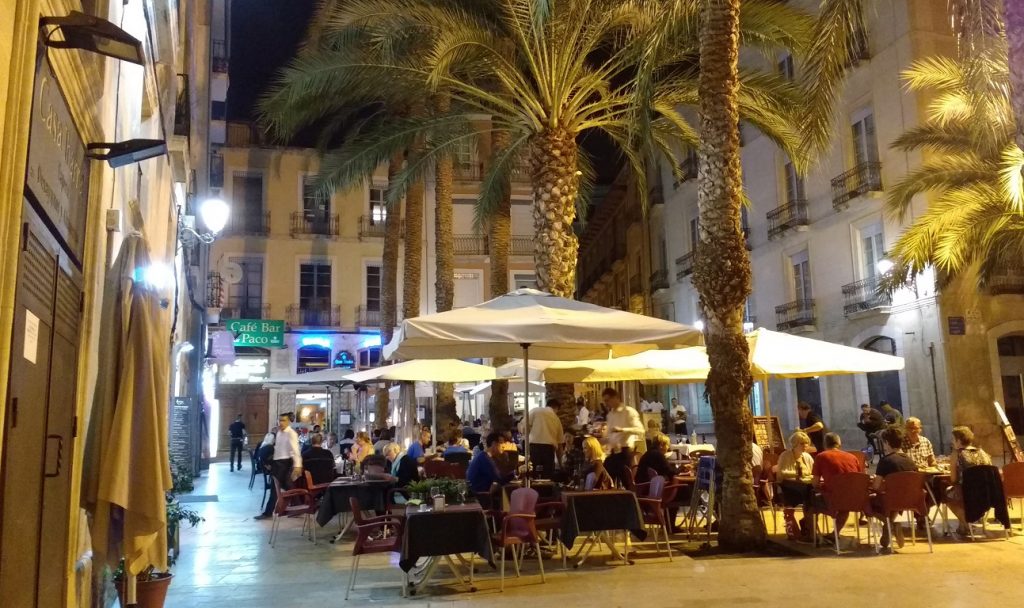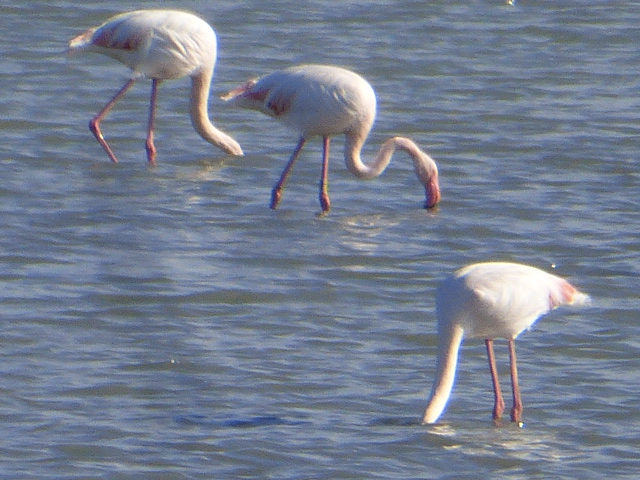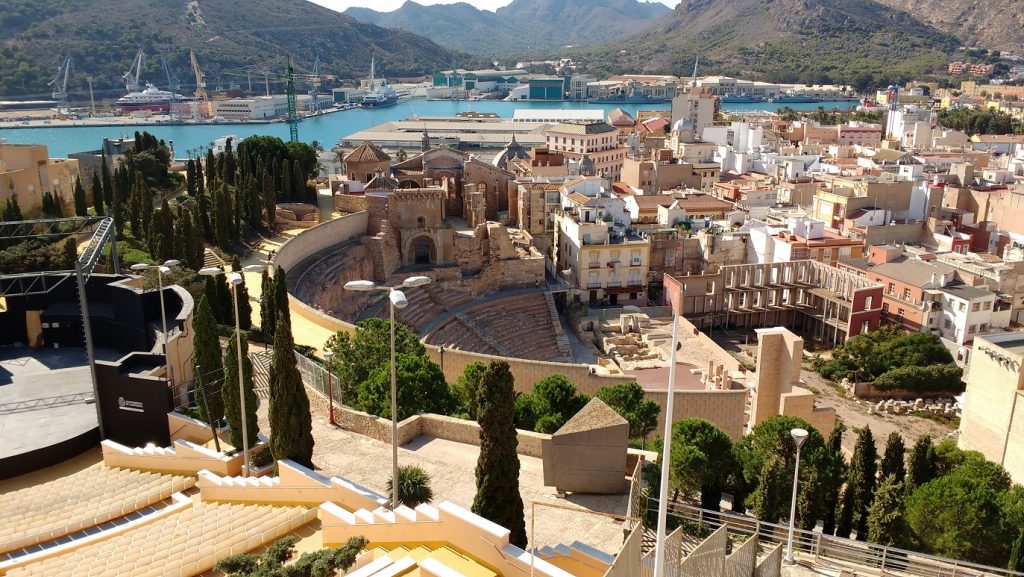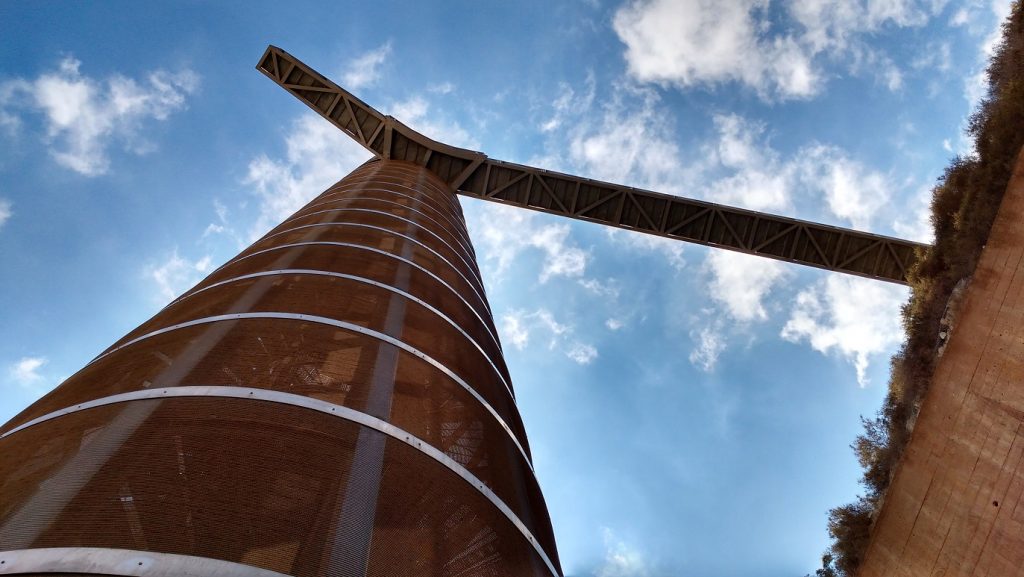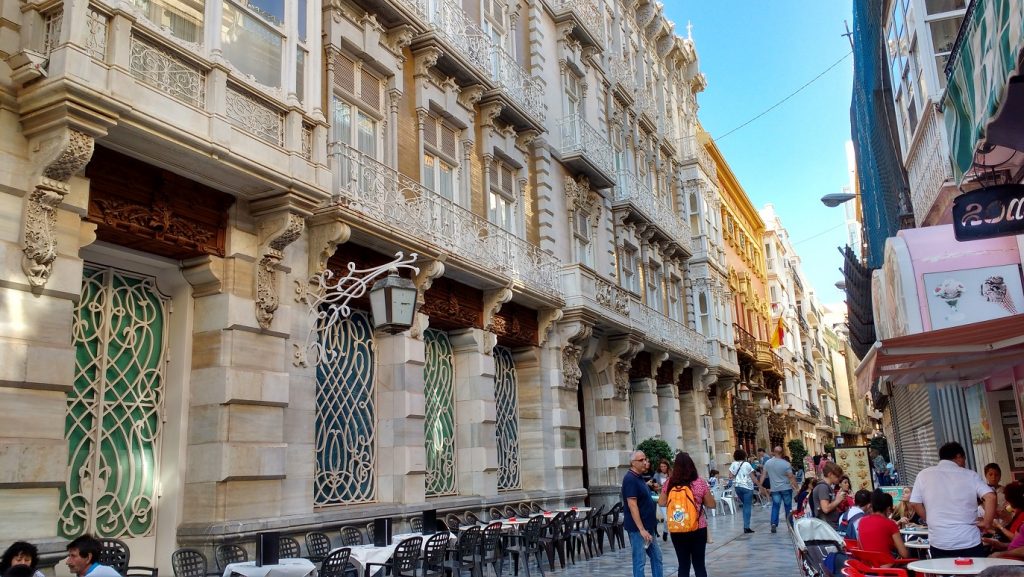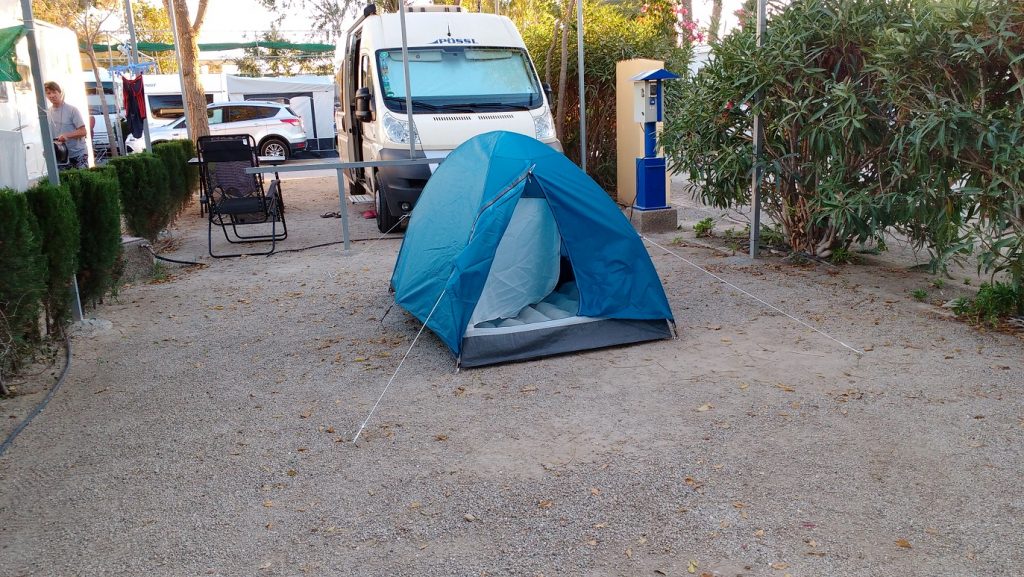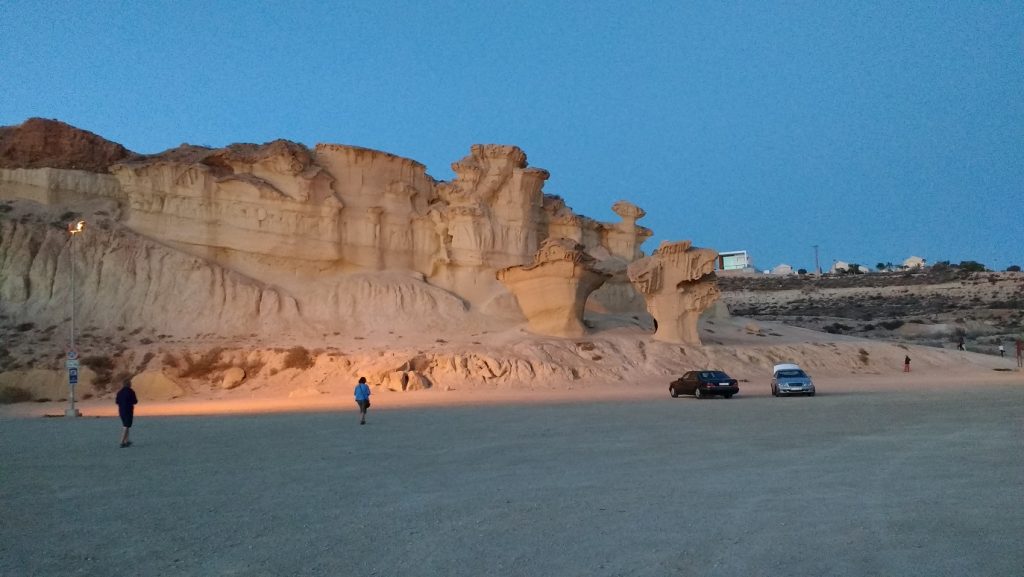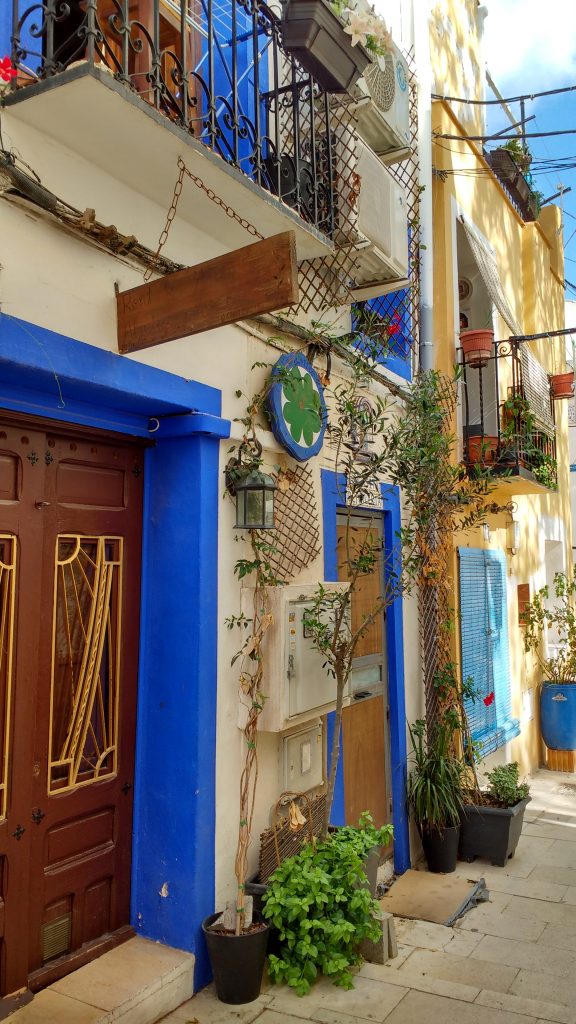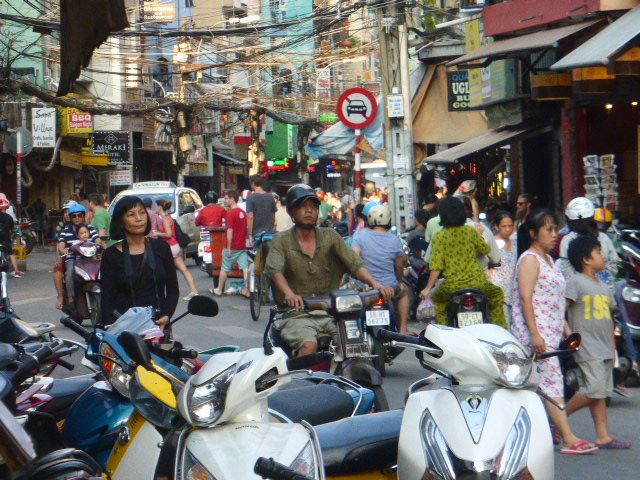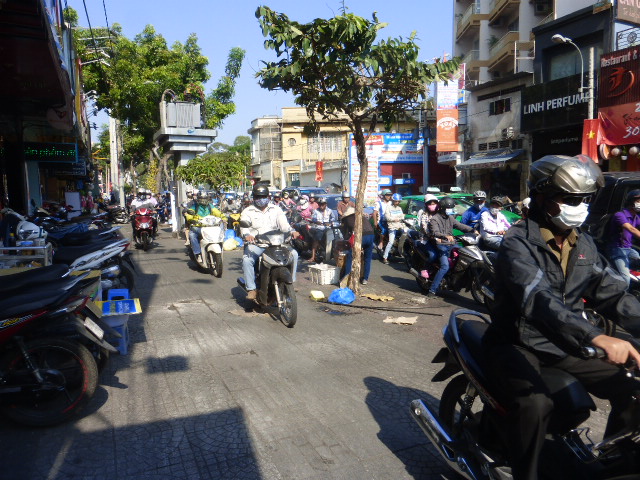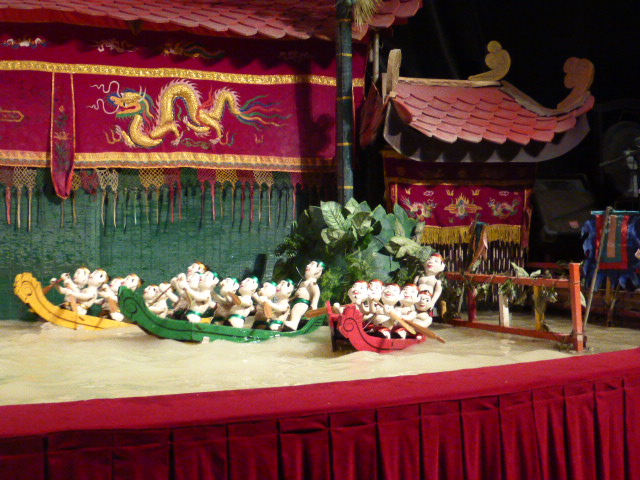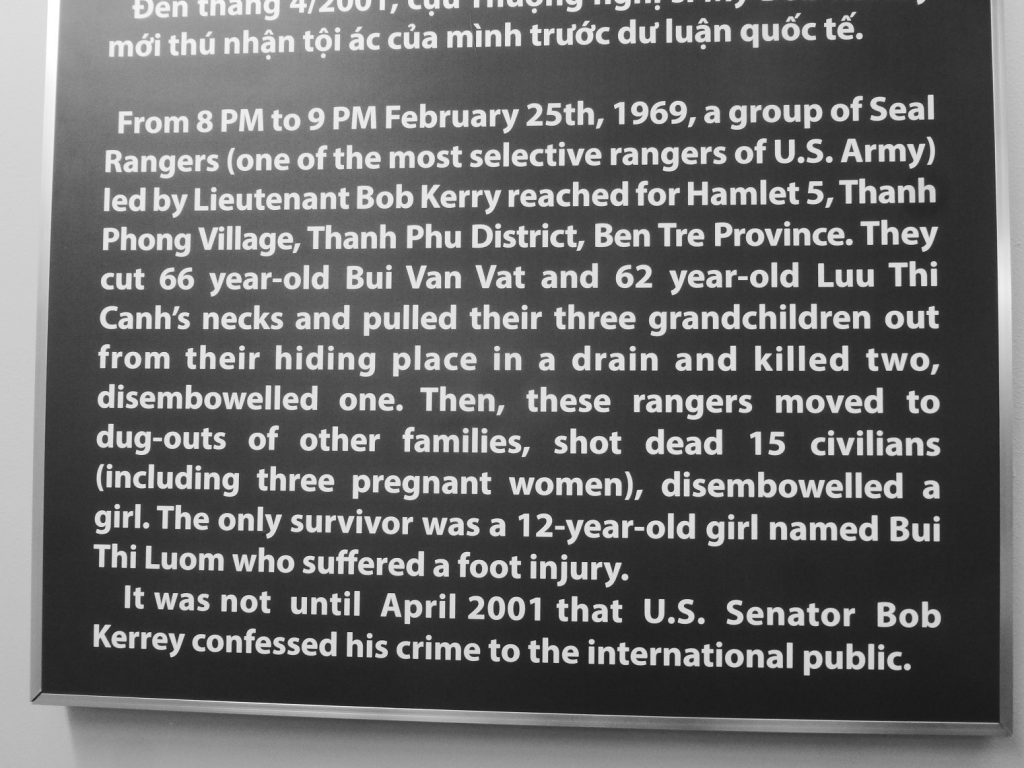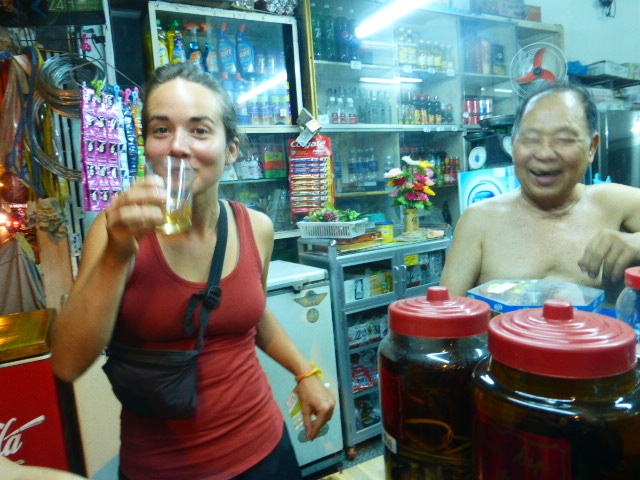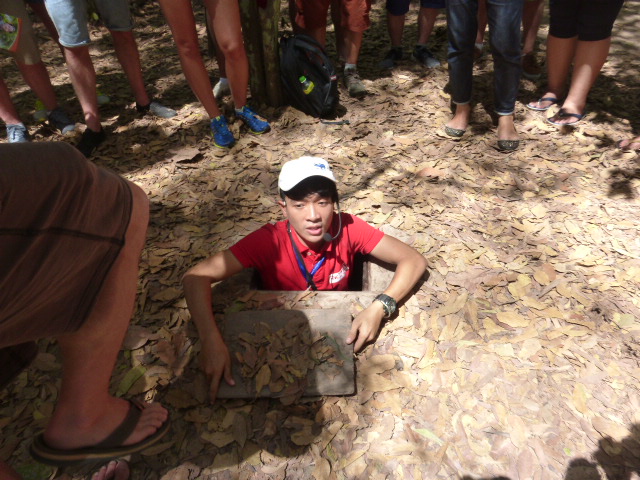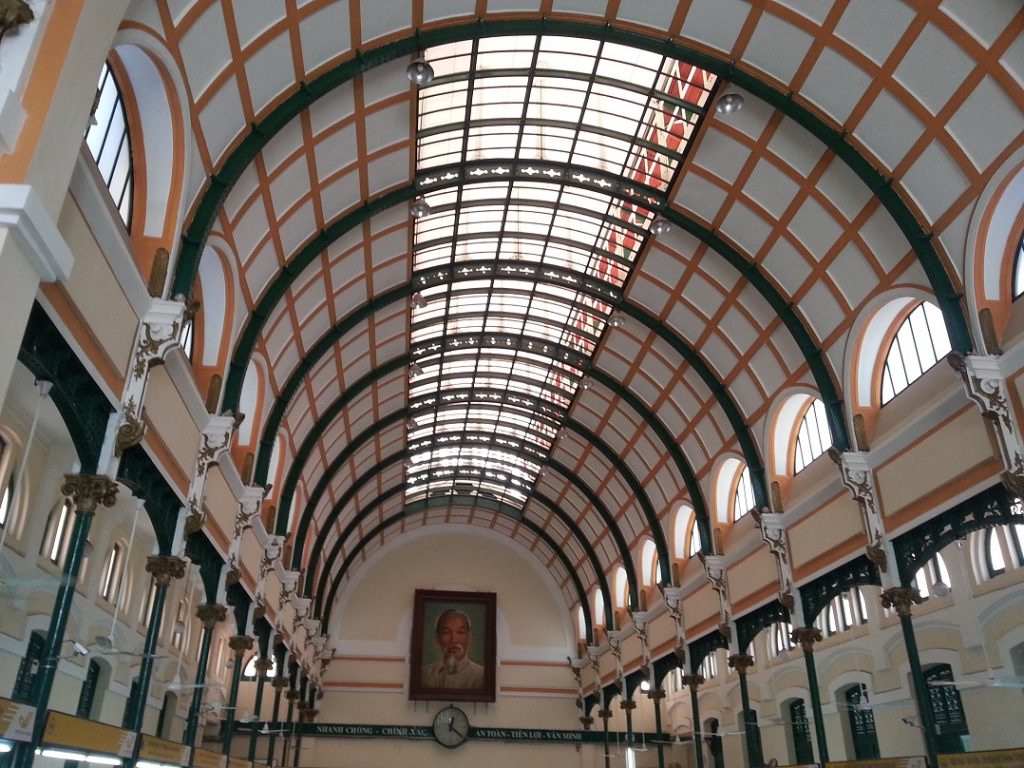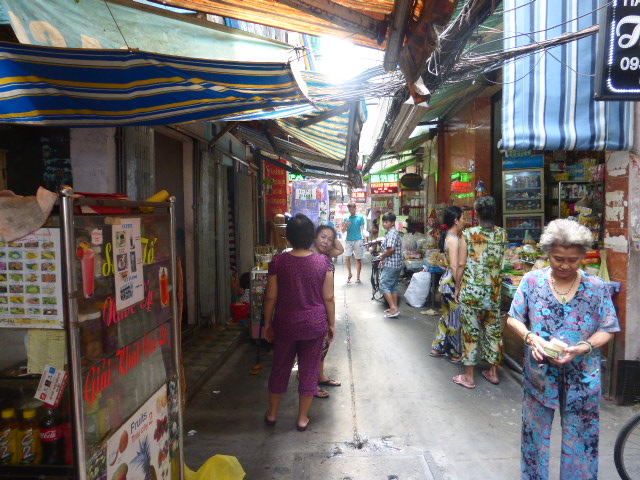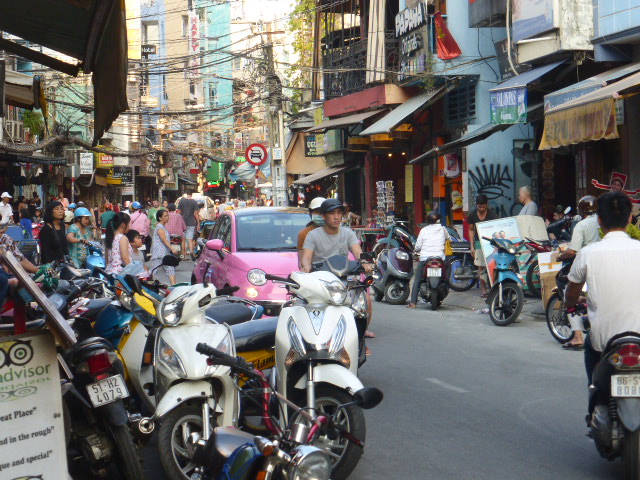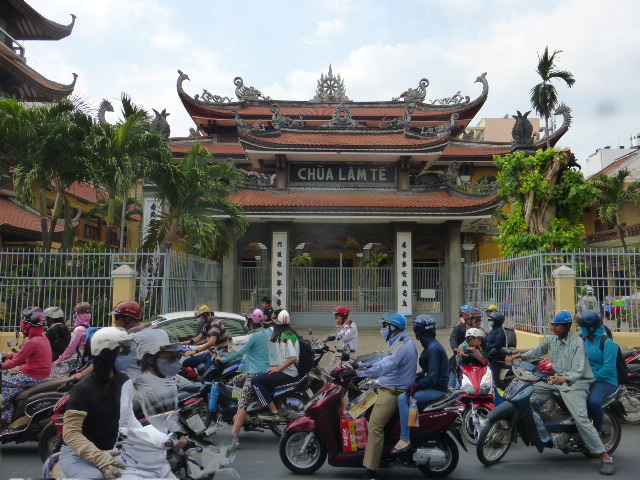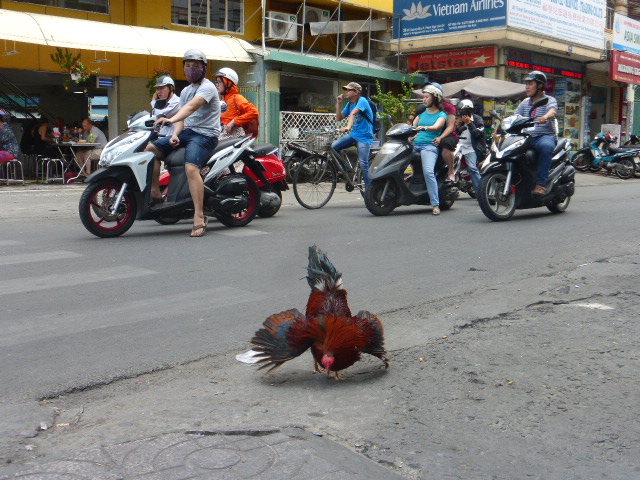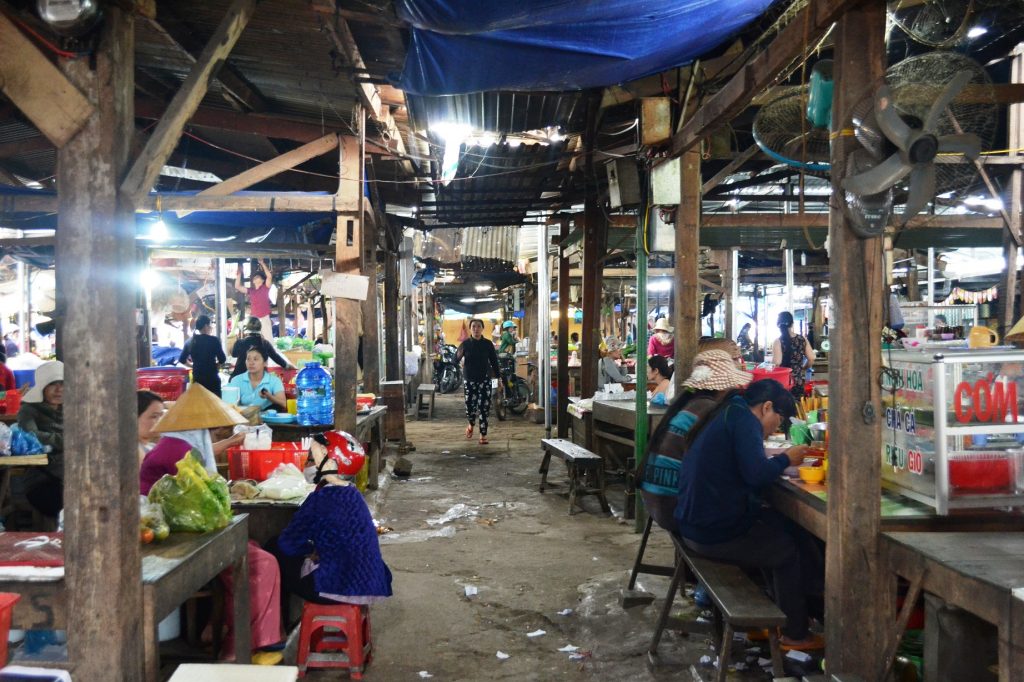
by Jane | Sep 17, 2018 | South America |
This article was first published February 2015 and has been updated.
The ‘Day of the Dead’ and Climbing a Volcano in Quito, Ecuador
Arriving in Quito, Ecuador on ‘The Day of the Dead’ my friend Marcel and I managed to wangle our way into the crypt which is underneath the Basilica.
Normally only open on this one day each year to the relatives of the dead whose remains are interred in little holes in the walls, we tried to look like locals as we sidled past the guards on the door.
Scarlet Jones Travels is a participant in the Amazon Services LLC Associates Program, an affiliate advertising program designed to provide a means for sites to earn advertising fees by advertising and linking to Amazon.com

the crypt underneath the Basilica, Quito, Ecuador
We respectfully spent half an hour or so wandering around the tunnels where families were dusting out the cobwebs in the little alcoves and replacing the plastic flowers, photos and statues of this saint or that virgin and generally just giving everything a bit of a spring-clean.
It was very different to the bright, colourful ceremony that we had passed in our bus earlier that day up in the mountains, although I do like the tradition of everybody remembering their loved ones on the same day.
Rather than individuals dealing with their personal loss on various anniversaries of birth, death or Christmas whilst the rest of life goes on around them, the Day of the Dead allows a collective understanding and empathy with others.
As our bus had driven out of the mountain town of Otavalo earlier that morning we had got caught up in a traffic jam outside the main cemetery where the majority of the indigenous population bury their dead.
The roads around the cemetery had been packed solid with people and families laden down with baskets and flowers as whole families decamped to the graves of their ancestors where they held picnics. The picnics which always included the dead person’s favourite food were actually spread out on top of the graves and everybody sat cross legged around.
The ‘Day of the Dead’ which is celebrated all around Central and South America and Mexico is a day of celebration rather than sadness and it was never going to be any more colourful than in that rural cemetery.
To further cement the collective remembrance, at this time of the year many of the shops and restaurants sell little images of people called guagua de pan (bread babies) and a thick, gloopy purple, slightly unsettlingly warm drink called colada morada (the drink is made of corn and blackberries). Both of these seasonal treats are devoured with relish everywhere.

guagua de pan; treats for the Day of the Dead in Ecuador
Reflecting on the previous five years.
As I update this article nearly five years after I had first published it, I reflect upon how my life has turned out.
Arriving in Quito after 3 months in a volunteer placement in Peru I was a totally confused solo traveller. My personal life was in tatters and my self-belief was at rock bottom. I often pose myself the question….’what will my life look like in 5 years time’…and I vividly remember doing just that when I was in Ecuador.
I never take things for granted and I know that I got to the place in my head where I am right now with a lot of determination, constant questioning and with the support of some truly amazing friends. South America is edgy, dangerous, overwhelming and bursting with life and it was certainly a baptism of fire for me, then recently divorced and with almost zero self-confidence.
I am now a Mindfulness Practitioner and a published (ebook) author, (click here for my book, Becoming Stronger through Mindfulness), I support and guide others along their paths of self-discovery and I continue to travel.
At the end of this article I will post some useful links to resources that you might like if you are about to head off on your own journey – and if you are not quite ready to do that yet and you would like some guidance about how to learn to believe in yourself again, drop me an email. I would love to hear from you.
Things began falling into place for me in South America and one day in Quito when I was out for lunch I met a lady from Canada who was visiting the city. It now always makes me smile when this happens because one of my main worries before I set off on my adventures, and that of most solo travellers is of how you will meet people when you’re on your own; but back then, I didn’t realise how frequently this would happen.
I was extremely grateful when this lovely lady simply came over and asked to join me at my table. The following day Sudha and I agreed to meet so that we could ride the cable car together – and there I was, no longer a frightened solo traveller
In the end we didn’t take the cable car as there was incredibly low cloud over the entire city but we went off for a morning’s shopping in a large craft market and drank some more of the purple colada morada. Quito stretches the length of a long narrow valley and in just about every direction there are mountain peaks, volcanoes and clouds.
There is something so special about the clouds above the Andes. I don’t know how the sky can appear to be bigger and more expansive but here it does, and because in the mountains you are high up, the clouds sit lower over you.
They can certainly affect the mood of the city trapping the air in when they press down grey and menacing, or stealthily creeping and flowing down the surrounding mountains like soft grey rivers of fog or, when there are no clouds at all, it’s as if your spirit is free to soar and fly up and away into the universe beyond and here I was enjoying it with a lady that I had only recently met and looking forward to my next destination.

Quito far below the Pichincha volcano in Quito
Climbing the Pichincha volcano, Quito
However, I’m getting all poetical and I digress yet I still have to tell you about my last amazing day in Ecuador. Marcel and I decided to climb a volcano. We were joined by Rachael who was new in town and staying in the same hostel as us and luckily for us the clouds were way up high on the day that we set off for the cable car called the TeleferiCo.
Quito, the capital city of Ecuador sits at an altitude of 2800 metres and is the highest official capital city in the world. It has more than 1.6 million inhabitants…and it literally sits around and up the sides of an active volcano which last had a significant eruption as recently as 1998.
These South Americans are a hardy lot and they don’t let a little thing like an active volcano bother them – they have even built a cable car system up the side of this one!
Unlike many other cable cars in Latin America such as those in Medellin or Manizales, this cable car in Quito has been built mainly for tourists and it whizzed us fast up the side of the volcano. Or at least it was fast once we’d got onto the thing. Rachael and I had to restrain Marcel who with his German scientific mind could not believe the method by which we had to get onto the system.
In fact there seemed to be no method. Despite the steadily growing queue, if you wanted a whole cabin to yourself then you could have a whole cabin to yourself and damn everybody else behind you! In the end, Marcel cracked and escaping the clutches of Rachael and me he jumped the queue and strode into a cabin with a family who had hoped to have it to themselves.

the summit of the Pichincha volcano is the furthest peak
Once onboard the Teleferico it whisked us up to 4,000 metres and some absolutely stunning views of the city. The ride costs twice as much for tourists as locals and is quite expensive by South American standards and in my opinion you shouldn’t bother going unless you have a clear day. But we were lucky and we had a stunning wide-open sky kind of day and we were not here only for the ride. We were here to climb a volcano.
It started out just like a walk in the park. But an altitude affected heart thumping, heavy-limb uphill sort of a walk in the park.
A grassy ridge led us up and up for more than an hour and very gradually the sharp craggy rocks of the summit came into focus.
People use this volcano as a training ground for altitude and groups of runners – runners!!! – I could barely put one foot in front of the other at this altitude – groups of runners puffed past us. In the cafe there was an oxygen bar where, for a few dollars you could buy time at an oxygen point and sit with a mask on and revive yourself.

the scree slope – great fun coming down the Pichincha volcano
I am never entirely happy with heights and a couple of hours we were faced with the steep side of the sharp peak. Here I have to thank my two friends who encouraged me up – at times using hands and feet and climbing up the rocks.
It was tough going but we passed people on their way down who told us that the effort was worth it. The clouds began to swirl down around us and I was a little afraid of getting lost because in some places there was no obvious path, but onwards and upwards we went.
And finally, after much scrabbling, we were there on top of the world. The clouds lifted and swirled and allowed us to see Quito, just a large splodge of dusty colour below and we sat and caught our collective breaths.
It was amazing to think that we were stood on the summit of an active volcano, 4000 metres up in the sky – but we also knew that getting down was not going to be a piece of cake either.

we made it – the summit of the Pichincha volcano in Quito
But there was a quick option to get down part of the way. Once past the spiky rocks which were very slowly negotiated, we bypassed the zigzag path and launched ourselves off down the scree slope. This was an almost sheer, almost smooth slope at a steeper angle than 45 degrees and was made up of soft sand and gravel with the odd clump of grass or rock to add an element of danger.
At the top you take a deep breath and you launch yourself using whatever method best works for you. Crouch down on your heels and scoot down the hill using your feet as a sled, or bounce down; leaning well back into the mountainside taking giant-sized slithery steps and all the time being very careful not to catch your boot on a misplaced hillock which would cause you to face-plant the gravel.
We all obviously made it down in one piece and we caught the cable car back down through the thick fog which had now swallowed up the entire city.

heading back down the volcano in Ecuador
And then I was climbing into my bunk in the Minka Hostel for one last time before I would take a cab to the airport and my flights down to Brazil.
If you are thinking that your life is somehow stuck but you can’t quite put your finger on it, or you have demons that you need to fight before you can move forward, you can get my book here – Becoming Stronger through Mindfulness or trial my self confidence builder, the Smash the Pumpkin Project for a month, click here.
If you are ready to travel yourself; when I was in Quito I stayed at the Minka Hostel – get the latest prices and details here. I bounced in and out of this hostel for a couple of months because it had such a friendly and welcoming atmosphere. I love the Lonely Planet Guide books – you can get many of them online now too so that you don’t have to carry them around in your backpack – and talking of backpacks I STILL love my [easyazon_link identifier=”B06VVR23DX” locale=”UK” tag=”scajonblo0e-21″]Osprey Farpoint 55 backpack[/easyazon_link] which has been all around the world with me
If you enjoy reading about my adventures, do follow me either here or on Facebook. Click on this link and I will also send you a virtual postcard with the odd newsletter attached every month or so.
And do take 10 minutes to drop me an email or let me know in the comments what you are up to and what you thought of this article.

the hike up the Pichincha volcano started off fairly easily
This post may contain affiliate links and/or references to our advertisers. We may receive compensation when you click on or make a purchase using such links

by Jane | Jan 22, 2018 | Europe, Personal stories |
I knew next to nothing about naturism in Catalunya until I began setting myself personal challenges. I had never taken off my clothes off in public but I felt that I needed to give it a go. I am a mentor to people with low self-confidence and low self-esteem helping them achieve self belief through a series of personal challenges – and as it’s only right to practice what I preach I am always looking for ways to stretch myself.
Luckily I have the perfect challenge partner in Debs who is often even more up and ready for things than me and so the other summer we decided to push our boundaries and discover how much self empowerment we could achieve. Click here to read more on self empowerment
Make sure that you continue reading to the end of this article for the tale of a very funny incident that happened on the nudist beach at Playa del Torn in Catalunya last summer!
Getting naked at Playa del Torn
The first challenge that we set ourselves that summer was to visit a naturist beach.

Playa del Torn
Close to the town of Hospitalet de L’Infant on the Costa Dorada in Catalunya there is a large naturist resort – i.e: naked people as opposed to a naturalist site where you go bird-watching and such-like. It is important that you do not get the two words confused!
This resort, complete with pools, restaurants, and campsite attracts naturists from all over Europe and it’s on a wonderful position up on the cliffs behind a long stretch of soft golden sand. Playa del Torn (or Platja del Torn in Catalan) is a large public beach with a lively xiringuito (beach bar) down on the sand where people from the local area mix with the campers. During the summer months a little gazebo is set up on the beach where you can get a fabulous full body massage from Albert who normally works in Barcelona and the occasional beach vendors wander along selling artisan jewellery or sunglasses. The beach has a lovely friendly family atmosphere in the locality of the campsite and the beach bar whilst further along the beach is gay friendly.
Debs and I parked the car near the beach of Playa del Torn and we set off along the cliff path which runs next to the campsite. We had not taken more than 10 steps when a woman came out of a gap in the low hedge from among the camper vans and walked along in front of us wearing absolutely no clothes and carrying a loaf of bread under her arm. Walking past the caravans and the tents I could see that everybody was carrying on their daily business – playing cards, standing and chatting around the barbeque, reading or cooking BUT the majority of them were stark staring naked. Toddlers chased each other around yelling enthusiastically and groups of teenagers hung around looking cool (most of the teenagers were wearing bikini bottoms or swimming trunks for modesty.)
I suppressed my giggles as we walked down the steps to the beach where a volleyball game was in progress, feeling like I was in a Carry On film. Reaching our chosen spot with as much space around us as possible Debs and I stripped off our clothes – and I promptly lay down flat and stayed flat for as long as I possible.
As the day went on I progressed to swimming in the warm sea – what a fantastically liberating feeling that is with no bikini – and I had a massage from the wonderful Albert. The massage was a piece of cake after the trauma of booking my session with him.
Tickets needed to be bought at the bar in the xiringuito – and my personal challenge was to buy mine without covering up and wrapping a sarong around my body. All well and good and I was feeling quite pleased with myself as I crossed the hot sand – until I wove through the tables to the bar (it was lunchtime and busy) and it dawned on me that my bare bottom was head height to the diners faces. Of course there was a queue at the bar and I had to wait there, standing with my naked bum just inches from a poor man’s dinner and feeling the insides of my stomach curling up with embarrassment!!!!
I managed to relax later on as Albert kneaded all of the knots out of my tense muscles whilst I lay in the shade of his gazebo. He told me that he worked as a masseuse in Barcelona but that he decamped to the beach for his work during the summer. When I confessed to Albert that it was my very first visit to a naturist beach he replied how brave I was to actually have a massage (naked) right out there in the public eye and I realised that I was beginning to enjoy myself.
Personal challenge achieved I felt great as Debs and I returned to the car – in fact we returned to Playa del Torn many times throughout the rest of the summer and we progressed to drinking in the bar and then making friends with groups of both campers and locals. It was idyllic standing and sitting around chatting as the sun went down and the moon came up over the horizon and looking back, it was always gratifying to realise how relaxed I had become with my own body image.
A naturist beach is a great leveller. Without clothes on people usually soon realise that not even the elegant couple who turns heads as they walk across the beach lives up to the media driven image of perfection once they remove their clothing. Cellulite, flabby bits, scrawny bits and dangly bits are everywhere. Bodies are decorated with both tattoos and scars, boobs may be missing and piercings glint in the sunlight. It all seems less important somehow. Smiles, facial expressions and laughs become what define beauty and we can all wince together at sunburn in delicate places.

Scarlet Jones naked at Playa del Torn
Snorkelling in the dark
My second personal challenge that summer was to attempt a night time snorkel.
I am not at all confident out of my depth in water and I am terrified of waves in the sea. Debs and I had already spent the day snorkelling around the rocks in the little bay of Sant Jordi d’Amalfa on the coast of Catalunya and the sea was lovely and calm as we made our way up to the beach hut at dusk where Plancton have their base.
We were given our equipment – a wet suit, snorkel and mask, an arm band with a flashing light and a waterproof torch while the instructors told us how we should conduct ourselves and pointed out some of the things that we could expect to see. And we set off BUT we turned left instead of right and walked down to the next bay where the sea was anything but calm.
I had already told one of our instructors how nervous I was and she (Eli) stayed by my side as I got into the water. I was only waist deep but the waves were crashing over my head, and whilst terrified I pushed through beyond the breakers until I was out of my depth. The rest of the group struck out for the sea while I attempted to sort out my mask which kept on leaking. Eli took my hand and we swam slowly out – and then I panicked. I had a vision/premonition/past experience – I don’t know – but I KNEW that if I continued I would surely drown. I can swim but all of a sudden I lost the ability to keep my head above water and I just had a dreadful recurring feeling that I was going down under the waves. I panicked even more as I noticed Eli backing away – I could hear a little voice from my swimming lessons as a child saying that you keep your distance from a drowning person – but Eli pushed the dive float to me and waited patiently while I got my act together talking calmly to me, but I knew that the overwhelming fear that I was feeling wasn’t going to go away. I had to get back onto dry land immediately or I would be feeding the fishes.
Clutching the float as if my life depended on it we made our way back through the crashing breakers. I was so relieved to be back on the damp sand and promising Eli that I would now be fine she went back to join the others while I sat and watched the shooting stars above me in the dark sky and thought about my experience.
Had I failed at my personal challenge? No. Of course not. I had pushed myself to get into the rough water in the dark in the first place and whilst I had failed to snorkel in the dark I had given it a go. Would I do it again? Probably not! I had tried my best and I can see no real reason to attempt it again.
Driving on the wrong side of the road
I was initially nervous about driving on the ‘wrong’ side of the road in Spain, but it didn’t take long before I was zooming around everywhere. I got lost plenty of times (no surprise there) but I enjoy driving and it’s a dream in Catalunya because apart from in the town centres there is very little traffic.
I used to be very afraid of heights until my year in South America. In Peru I eventually got used to careering around the Andes in chicken buses with the drivers high on the coca leaves that they chewed, both to stay awake and also to counter the altitude sickness, but I was still very nervous the first time that I had to negotiate a truck down a narrow track from the mountain in Spain where I was staying. In fact, I put the trip off for ten days until I ran out of food. A friend offered to deliver me supplies but I stubbornly declined – this was just another challenge which would prove to me that I was capable of coping by myself.
So early one morning I set off down the mountain. Nope, not in the truck but on foot! I wanted to see for myself where the ‘dangerous bits’ were as well as the passing places. Because I could take my time and look where the dodgy bits were I began to relax although it did take me nearly two hours to hike back up to the house.
To celebrate my epic hike in the heat I opened a bottle of wine – which of course also had the effect of postponing the inevitable until the following day – but I am pleased to say that I eventually made it down the hairpin bends and now I hammer up and down the mountain like a rally driver!
Since that summer I have also ridden my motorbike over to Spain crossing the English Channel on a twenty four hour channel ferry and riding solo down through Spain during an epic storm. On that journey I was so glad that I had been perfecting my Spanish because I got horribly disorientated in Bilbao and I needed to ask directions. My phone had stopped working, the name and address of my hostel had disintegrated and my map was in soggy pieces. I squelched into a bar where half a dozen men leapt to my attention and helped me before sending me out into the rain again, this time in the correct direction.

Facing my fear of heights in Catalunya
Immersion in a foreign language
Catalan is the first language of the majority of the people in this region of Spain which is great for me and others who are learning to speak Spanish. Because Spanish (Castilian) tends to be the second or even the third language here, people often speak slower and can use simpler vocabulary.
I loved speaking with Andres who farmed close to the place that I was living that summer. He was extremely patient with me, rephrasing words or acting out verbs so that the conversation flowed as best as it could although I did have one hilariously epic language-fail one evening.
I was a bit flustered as I answered the door and invited Andres to sit and wait while I finished up my conversation with a technician in the States. My laptop was open on the bench as I was in a ‘live chat’ with the other guy. In my best Spanish, or so I thought, I explained to Andres that my website was broken but there was a man in the States who was going to look at it and mend it remotely from his end.
I didn’t really understand why Andres abruptly stood up and shot out of the door mumbling something about going to check on his plum trees in his field however I returned to my conversation with the expert on the other end of the chat window. Twenty minutes later there was a tentative knock at the door and Andres hesitantly poked his head into the room. After assuring him that I was finished and my computer was now functioning perfectly I got on with the business of cooking dinner, wondering why Andres kept giving me strange looks.
Halfway through our meal Andres began to chuckle as something obviously dawned on him. It turned out I had mispronounced the word for webpage. I had put the stress in the wrong place which totally changed the word and therefore the meaning.
I had apparently informed Andres that my VAGINA was broken but there was a technician in the US who was looking at it down the camera on my computer – and I just needed Andres to wait for fifteen minutes whilst it was mended!!!!!
It’s always a bit daunting when you don’t speak the same language and you need to communicate. It is the easy option to only mix with people who are the same as you and avoid difficulties; but we also communicate via body language, facial expressions and sign language and the results when you make the effort can be so rewarding. Learning another language is another way to stretch your comfort zone.

the Catalan countryside
If you would like to know more about how you can receive a personal challenge that is emailed to you every fortnight, drop me a message and we will arrange a free call and I can explain more and while you are about it, sign up for my email list and get regular updates and more of my stories sent to you.
[grwebform url=”https://app.getresponse.com/view_webform_v2.js?u=spPd&webforms_id=13127101″ css=”on” center=”off” center_margin=”200″/]
And now for that funny story that I promised you.
Our friend Toni and his partner make lovely artisan jewellery from natural products that they sell at Playa del Torn and we have got to know them over the last couple of years. In keeping with the naturist element of the beach they wander up and down selling their products whilst wearing no clothes.
One day after spending some time chatting to Debs and I, Toni and his partner continued walking along the beach – Toni was holding a tray with some little shell anklets on it.
A sudden gust of wind blew the jewellery into the sand – with one piece ending up between the butt cheeks of a guy who was lying face down and asleep.
Toni was in a quandary. Everybody watching held their collective breath as Toni made several attempts to pick the anklet up from the guy’s crack. He decided to go for it but just as his grip tightened around it, the guy woke up and rolled over onto his side.
A dozen or more of us who were watching collapsed with laughter at the frozen tableau. As the guy rolled over his bum cheeks had gripped the anklet tight – he froze as he looked up and saw a naked guy bending over him and holding whatever was trapped between his buttocks.
The guy’s wife was also laughing too hard to explain to her husband straight away as Toni backed away and his own partner was creased with laughter as she collected up the rest of their jewellery.
If you would like to know more about my time in Catalunya you can read some of my other posts here:
Exploring the Ebro Delta in Catalunya
Cat Fishing in Catalunya
The Catalan referendum: an opinion piece by Scarlet Jones
This article has been updated since it was first published in September 2015
To save this article for future reference pin one of the following images

Playa del Torn, Catalunya. Getting naked and other challenges

getting naked & other challenges

by Jane | Sep 24, 2017 | Asia |
Hoi An. I had heard mixed reviews about this city in Vietnam. It seemed that everybody loved it but many people didn’t like its Disneyfied atmosphere: so I went to find out for myself what the truth was about Hoi An and what there was to do there.
[grwebform url=”https://app.getresponse.com/view_webform_v2.js?u=spPd&webforms_id=13127101″ css=”on” center=”off” center_margin=”200″/][grwebform url=”https://app.getresponse.com/view_webform_v2.js?u=spPd&webforms_id=13182401″ css=”on” center=”off” center_margin=”200″/]
This is what I discovered:
Love is in the air. Everywhere!

Love is in the air
Hoi An is a totally photogenic town and it has marketed itself well. It attracts hordes of newly-weds on their honeymoon and couples who want to pose for their wedding albums. Dodging the tripods and the professional photographers can prove quite difficult. Shop keepers are more than happy for lovers to pose in exchange for a small fee in front of their colourful lanterns and in some places it can be difficult to walk along the canal bank without wandering into somebody’s photo shoot.

Hoi An reflections in the canal
Must know:
- In Hoi An the tourism is orchestrated and managed at a highly professional level.
- There will be a zillion people crowding onto the bridges for the best photo shot.
- They will use elbows to move in front of you!
- The food and drink prices are inflated
- And yes, the touts will hassle you on every corner….
…..but after the brashness of Hue and Danang I have to admit that I did like Hoi An.
Things to do in Hoi An, Vietnam
My friend Gosia and I arrived on the local bus from Danang without accommodation and we wandered around the streets to find the best hostel for our money. As it was the shoulder season there was plenty of choices and we could bargain for a discount. We soon found a reasonably priced hostel and Gosia and I quickly dumped our bags and went out to explore and find out what we could do in Hoi An.
If you want to check your accommodation in advance, you can search for hostels here with Hostelz.com or you can look for hotels and other accommodation with Agoda.com. I use both sites when I am travelling – even if I don’t book in advance.

Hoi An – a pretty UNESCO listed town
Hoi An old town
The heart of Hoi An as far as visitors will be concerned is the compact old town area which is focused around the canal.
Hoi An gained special importance in the 15th century when it grew and thrived as one of the major South East Asia trading ports. You will find a mixture of authentic housing styles and luckily the authorities have recognised the attraction of these. Unlike in much of Vietnam where the old is getting ripped out at speed, here in Hoi An it is being repaired and repainted.

Hoi An canal
The brightly painted houses are festooned with flowers and in the evening the trademark silk lanterns light the streets with warm colourful glows and attract hordes of people like bees around a honeypot.
Ancient temples offer tantalising glimpses into a mysterious past and you can jostle for a picture on the old wooden Japanese covered bridge (for a price). You can browse among the hundreds of tiny shops which sell artisan products and where you will find a whole host of things made out of silk and made-in-a-day clothes or you can relax and sip mojitos on a roof terrace overlooking the canal.
One of the best things that Hoi An has done has been to ban motor vehicles from the old town for much of the daytime and for all of the evening. Whilst the streets are packed with visiors at least you don’t have the eye-watering pollution and traffic fumes that plague the other towns in Vietnam and while the noise levels are intense, they are at least not the exhaust drones of cars and lorries.
Get your Lonely Planet guide here and discover where you can avoid the crowds and the pollution in Vietnam
One of the downsides is that you have to purchase a book of tourist tickets in order to gain access to the Japanese Bridge and to many of the temples and places of interest. I only had time to visit one or two of the attractions but it wasn’t possible to pay at the individual sites. Why not offer the book at a discounted rate? I would willingly have paid slightly over the odds to see the one or two choice places that appealed ot me.

Hoi An Temple
Beware of this trick
The touts do a pretty good job of leading you to think that you need to purchase a ticket to simply enter the old town area. This is NOT true. The book of tickets will give you access to many of the temples and the Japanese Covered Bridge but ANYBODY is free to wander around the old town area without a ticket. We saw a lot of tourists hesitantly parting with their cash, believing that they had to do this so that they could enter the narrow streets.

The Japanese covered bridge in Hoi An
The old town of Hoi An is a gem and whilst outside of the UNESCO listed district is a new town; it’s still worth a wander around. Here life goes on as normal away from the tourists. Coffee shops and markets are filled with the local Vietnamese residents. Small family run businesses trade as they have done for years and you can find the best Banh Mi stalls in Vietnam.
A long straight road leads you away from the city to one of the beaches. I hired a bicycle and I cycled along this road one morning whilst heavy lorries honked and swerved around me as I tinkled my bell and I in turn swerved around clusters of school children on their bikes and I avoided herds of cows that were being led through the traffic.
Ho An’s Beach
Once away from the town, the terrifying road thankfully quietened down and I pedalled alongside the vegetable garden area of this region. Irrigated fields stretch for miles, where many of Vietnam’s green vegetables were growing and people worked in the fields shaded from the sun in their conical hats. The road became dustier and sandier and eventually I reached the beach.

Hoi An Beach
After the tourist bubble of Hoi An old town the beach was a welcome relief. Yes, it was busy and yes, it was lined with beach bars, but the overwhelming noise level that had accompanied everything that I had done in Vietnam to date was toned right down.
I treated myself to a cocktail and I settled down on a sun-bed on the sand. I watched the fishermen surfing the waves in their little bouncy round coracles and I relaxed. It was lovely to escape the chaos that was all I knew of Vietnam to date.
I would soon discover the interior beauty of Vietnam away from the tourists, but for now, with my cocktail, my book and my thoughts I was very happy.

Things to do in Hoi An; visit the beach
Night time in Hoi An
The old town is always busy but it REALLY comes alive at night. The silk lanterns swing in the breeze, glowing with warm, colourful lights and the street food market sets up on the canal side. The air is filled with the smell of barbequed food and stir fried noodles and you will be spoilt for choice with places to eat.
For me, the best place was down by the canal where among the tiny little plastic tables, you squat on a low stool and eat traditional dishes from the region while ladies run to and fro encouraging you to eat more. Like everything else in Hoi An, this is street food manufactured and repackaged for the masses but it was fun, tasty and much cheaper than the restaurants.

Hoi An at night
When you are eating street food or in a smaller cafe in Vietnam it is often normal to simply toss your chewed bones, serviettes and rubbish under your table as you eat (obviously check what the local people are doing first!)
If you are lucky there will be a small bin or a bucket there for the bits, but more often than not the debris simply collects around your ankles until the evening winds down and the street traders sweep everything away. To begin with, it felt quite naughty to throw my chicken bones onto the floor, but after a while, like everything else, it soon becomes the norm.
I met up with my friend and fellow blogger Donna Wanderlust from Haute Culture Fashion and together we hired one of the totally over-the-top tourist boats that silently glide around the canal at night. Surrounded by young couples who were gazing deeply into each other’s eyes, Donna and myself roared with laughter as our lady pushed us around on the water in the dark with her long pole and she encouraged us to launch the little paper and candle boat that we had bought. She told is that this would bring us good luck and enduring love (this concept is similar to the Loy Krathong festival in Thailand).
I also met Nam in Hoi An and a few days later I did finally escape from the cacophony of noise when I took a motorbike through the Central Highlands. Read about that trip here.

Donna Wanderlust poses with the laterns
Would I return to Hoi An?
Yes I would return.
I didn’t have time to go to the water puppet theatre (although I did catch a show in Saigon) and I didn’t have time to explore some of the Chinese and Buddhist temples and shrines in the town, but I would definitely return to Hoi An if I go back to Vietnam.

Hoi An – early morning
Whilst most things in the town are overpriced, you can buy ‘fresh’ beer for about 30 pence a pint, silk sleeping bag liners for $5 and you can drink mojitos as you watch the sunset from a roof terrace above the canal.
If you can’t get to Hoi An and you fancy one of the silk sleep sacks (great for travelling) you can get one at this link: [easyazon_link identifier=”B00W8B8IYO” locale=”UK” tag=”scajonblo0e-21″]Silk sleep sack[/easyazon_link]
You WILL get pestered by touts (be firm but polite if you don’t want to buy), you could pay over the odds for bicycle hire, a hotel room, food and tours (bargain hard), but you will get the most beautiful photo opportunities and you will get a glimpse into another era (albeit freshly painted) from the past.
Read more
If you have enjoyed this article and you would like to know more about my adventures in South East Asia, click here for more articles.
You can pin and share this post at Pinterest by clicking on the following image too

Things to do in Hoi An
*Banh Mi – a French style baguette stuffed with a variety of things. You can choose from belly pork, pate, grilled chicken, fish or meatballs, cucumber, cilantro, onions and then there are the salsas. This very basic meal is food heaven.
This post contains affiliate links and/or references to our advertisers. We may receive compensation when you click on or make a purchase using these links
Scarlet Jones Travels is a participant in the Amazon Services LLC Associates Program, an affiliate advertising program designed to provide a means for sites to earn advertising fees by advertising and linking to Amazon.com

Things to do in Hoi An, Vietnam

by Jane | Jan 17, 2017 | Europe |
I had been static for far too long since my return from S E Asia so when my friend suggested a road trip around the south of Spain I didn’t hesitate – I was in!
I decided not to research too much into any of the destinations on the road trip because I wanted to discover what Spain had to offer along the way. I wanted to discover each new place for myself – apart from what I already knew and I wasn’t disappointed. There were countless ‘Wow!’ moments as we travelled for just short of three weeks, so read on and find out just what a road trip around the south of Spain has to offer and maybe go ahead and plan your own adventure.
If you are the sort of person that does like to plan in advance, you can get your guide books at this link

the prom in Alicante
Alicante
I began with a few days in Alicante. I travelled down by train to join my family who were renting a typical apartment building in the old part of the town just a stone’s throw from the Cathedral for a week. With the original patterned tiled floors and tiny balconies hanging over the narrow lane I was in my element.

View of Alicante from Santa Barbara castle
In Alicante I had been expecting a typical tourist hot-spot but in fact Alicante (click on it’s name for more info) is so much more. It manages to combine chic with contemporary and traditional with cutting-edge. It has a beautiful promenade running behind a port, the marina and some long golden sandy beaches.

the castle high above the town
There is the impressive Santa Barbara castle high up on a bluff of rock above the town which is well worth exploring. It is one of the largest medieval fortresses in Spain and has played a major part in the city’s historical events from when it was built by the Arabs to when it was used as a prison during the Spanish Civil War. You can get up to the top via a lift so there’s no need to tire yourself out in the heat. There are several museums in the town and, according to my sister, the shopping is quite spectacular. The streets in the old quarter tumble down the side of the hill where cute and pretty buildings have been haphazardly thrown together and everywhere is a riot of balconies, window boxes, flowers and colour.

pretty streets climb the hillside
Alicante, in fact the whole of the south of Spain, excels at tapas and this road trip unintentionally began as it went on – as one huge food fest.
There are bars and restaurants everywhere and because Alicante is blessed with a special sort of a micro-climate, much of the eating and drinking takes place outdoors. Tables and chairs are set up in just about every plaza and side street. One thing that always impresses me is how the Spanish take the art of service – waiters and waitresses, bar staff and barristas so seriously. In this country it is a respected career choice rather than a temporary fill-in job for students.

eating al fresco in one of the many plazas
The town hall is open to the public and is well worth a poke about (free entry). Anybody is free to wander around some of the rooms upstairs which retain their old chandeliers, portraits, tapestries and floor tiles and get a glimpse of a time gone by. The building itself is imposing with its large gold statue of Dali in the entrance and positioned just behind the beach road. Just smile at the receptionist and you should be allowed upstairs for a look.
My friend drove down and joined my family and I for a few day before we all went our separate ways and our road trip around the south of Spain began in earnest.
Alicante to Cartagena
Our vehicle of choice was a workhorse named Betty (the Berlingo), our accommodation of choice was a tent bought especially for the occasion and our route was flexible. It also soon became clear once we were actually bowling down the road and away from Alicante that we had no road map. This could be interesting!

I still get excited when I see flamingos
We passed lagoons packed with pink flamingos and then we drove through a dusty, lunar like landscape. Despite the heat and the desert-like terrain this huge region of Spain is where much of the fruit and veg for Europe is grown – under enormous plastic tents. These plastic shrouds dominate the landscape and are often, seemingly, miles from civilisation.
It’s really quite ugly but obviously quite necessary for both the economy but also to feed, not just the inhabitants of Spain but much of Europe too.

Spain is VAST
Cartagena
We rocked up at our first port of call – Cartagena. I wanted to visit this city because I had loved Cartagena in Colombia so much but there could be no comparison – apart from they are both large ports and there is an awful lot to see here.

The ampitheatre and the port in Cartagena
Cartagena is very much a working city with a port. There is a well-preserved Roman ampi-theatre which we didn’t actually go into but we could see most of it from above but Debs and I did visit the very interesting Bomb Shelter museum. During the Spanish Civil War the civilians of Cartagena hid out in tunnels and caves which were carved into the huge rock that dominates the city and these tunnels have now been opened up as a museum.
The tunnels were excavated in 1937 and sheltered up to 5500 people during the repeated bombing raids by the Italian-German airforce which supported Franco.
Cartagena was the headquarters of the Republican fleet who operated out of the port and this made it a target for the bombers. It was sobering to think of so many scared people crammed into the tunnels in the mountainside.

Going up – the lift up to the castle
On top of the big rock in which the bomb shelters are carved is the Conception Castle which we also chose to visit and which was accessed via a rather modern lift in a tall metal tube which wobbled horribly when you walked over the metal walkway at the top.
The 13th century castle houses an interpretation centre and various displays, and like the castle in Alicante it has spectacular views across the port.

the intricate details of the balconies
I was especially delighted with the roads lined with the impressive merchant houses complete with intricate details and balconies. In the late autumn sunshine, the streets were packed with people enjoying their Saturday tapas and drinks. Much of the old town is surrounded by ancient walls and it turned out to be particularly difficult to get our bearings due to the geography of the city and the way that it jutted out into the water.
We hadn’t booked any accommodation for our trip, intending to stay on campsites or in hostels but Cartagena had none. We tried to book a room at a small pension but rather suspected that it had been taken over as a residential home and nobody had bothered to take the sign down from outside. A guy who had to be close to one hundred years of age was manning the reception desk. He had absolutely no clue whether there was a room free for the night, the place smelt of over-boiled cabbage, there were armchairs arranged all around the reception room and an elderly lady exited the lift around the corner and hurled insults at the receptionist in a quavery voice.

we bought the wrong sized tent, lol
Our road trip hadn’t got off to the best of starts but we did enjoy our brief visit here and we moved on in the late afternoon, trusting to fate that we would find somewhere to sleep that night.
Bolnuevo, Mazarron
We followed the coast road south as the sun was setting and we found a nice campsite that was right on a beautiful, long sandy beach. There was a bit of a stunned silence once we had pitched our tiny tent among the big mobile homes. Our tiny tent had not been what we had expected at all – it turned out that it had been on the wrong shelf in the store! But we had no choice to make the best of things and embrace the challenge.
The Spanish family who were leaning on the low hedge were amazed that the two of us planned to sleep in such a tiny tent. As were the Dutch couple on the other side and the Germans opposite. We brazened it out – there would be no problem.

The strange rock formations at Mazarron
The beach at Mazarron was backed with some strange mushroom shaped rock formations that reminded me of the desert in Jordan. As it was late evening at the end of October it was mostly deserted but it was still warm. We only planned to stop over here for one night so we put our new cooker to good use and ate sitting in the back of Betty the Berlingo while hordes of children dressed as ghosts and witches (it was Halloween) rampaged around the campsite.
Luckily it was dark when we finally attempted to get in and into our respective sleeping bags. It certainly proved to be cosy – and somewhat of a challenge to get in and out of – especially with several glasses of wine on board. We were very aware of how sound carries through canvas (or nylon) especially as we imagined the Spanish family, the Dutch couple and the Germans were waiting with bated breath to find out if we would actually fit.
We did fit eventually but it was something of a struggle accompanied by much smothered laughter as we finally settled down to our first night on our Spanish road trip.
Cabo de Gata National Park
After a decent night’s sleep and a lazy morning we continued south, driving through some of the wildest and most under-developed coastline in Spain. We were in the Cabo de Gata National Park where developments are strictly controlled. The arid desert-like landscape felt very alien and was made even more so by the lack of houses, people or in fact other cars passing through. The road swooped across the desert and around cliffs, looping and switching back on itself as it fell towards the sea. This was a day mostly spent in the car with stops to picnic and to get into the travelling mindset.
San Jose
We found a large campsite a few miles outside the small beach town of San Jose where we pitched our petite tent. We drove into San Jose and wandered around on the sunny evening. This tiny little beach resort had an end of season feel as people grabbed the last of the sunshine. Families stretched out their time on the beach and shops enticed people in. Along the small prom some travellers and hippies sold bracelets and ornaments that they had made.
We sat outside a bar as darkness fell and enjoyed the sight of the Mediterranean Sea as it gently sploshed onto the sand. A text popped up on Deb’s phone with another recommendation of a place that we could check out on our trip – so there and then we decided to veer from our sort-of planned route, and mapless we would drive in another direction.
The following day we would be breaking away from the coast and heading inland and upwards
#roadtripSpain
Details of our road trip around the south of Spain – part 1
Part 1: Alicante – Cartagena – Bolnuevo, Mazarron – San Jose
Accommodation Details
Bolnuevo – Camping ‘Playa de Mazarron. This large lively site was deathly silence from 10.30pm. Shower blocks were clean and there were many of them, there was wifi available and pitches were divided up with shrubs and trees. Best of all was its position with beach access and close proximity to bars and restaurants on the beach.
Jan Jose – Los Escullos Camping. This was another large campsite but more remote from the bars and restaurants in the nearest town – however, for families staying there, there was a good activity programme and it offered water sports
You can go straight to the other articles in the series by clicking on the following links:
This is one of my favourite images from this section of our #roadtripSpain. Feel free to click and to share it (or any of the others) onto Pinterest etc etc

road trip Spain

by Jane | Sep 20, 2016 | Asia |
Vietnam is a country of contradictions and contrast; possibly more so than many other countries that I have visited – and here in Ho Chi Minh City the differences really stand out.
In the beginning I took some time to warm to Vietnam, but as soon as I acknowledged this juxtopostion (the fact of two things being seen or placed close together with contrasting effect) I settled down and I viewed the country and its people differently and I began to appreciate it. And to like it.
Take Ho Chi Minh City for example.
Many people think that Ho Chi Minh City is the capital of Vietnam. It isn’t – Hanoi is the capital city but it is understandable how HCM can lead you into forming this opinion.

a typical street scene in Ho Chi Minh City
To add to the confusion (or it confused me anyway) Ho Chi Minh City was formally know as Saigon but was renamed in order to honor Ho Chi Minh who led the country and defeated the Americans in the war. The name Saigon is still widely and fondly used in all circles – and at the risk of offending some people, you do have to admit that it sounds somewhat more romantic than Ho Chi Minh City.
With 8.2 million people Saigon is more populated that Hanoi. The roads are CHAOTIC. In fact the roads are so chaotic that the scooters have rat-runs along the pavements in order to beat the blockages at the junctions-. You have to keep your wits about you as sidewalks are used as bike-parks, shop fronts, street food eating areas and roadways.

This is the pavement not the road
It is steamy and sultry and hot in Saigon. People live side by side all crammed on top of each other with chaos and noise in a tropical sticky atmosphere. The pollution is horrible and the noise is dreadful but there are many reasons to visit this city.
The attractions of Ho Chi Minh City
First and foremost the best things has to be people watching and the coffee culture. Vietnam has the best coffee in the world and here in Saigon you can find coffee everywhere. It is served in the best coffee shops or for the best atmosphere sit on a tiny child-sized plastic chair on the pavement. Wait for the caramel, thick liquid to drip through your battered tin filter cup and ponder on the little known fact that Vietnam is the biggest exporter of coffee in the world.
The water puppet theatre
This was a real cultural gem. We had already seen shadow puppets in Laos and now we went to the theatre in Ho Chi Minh City. Musicians and singers lined the edge of the stage which is dominated by a shallow tank of water. Like the shadow puppets show in Laos I didn’t really have a clue about what was happening but I thoroughly enjoyed the whole event as the skilled puppeteers manoeuvred their puppets in the water, splashed us in the front row and dragons, dolphins and farmers acted out a story in front of our eyes.

the water puppets
The War Remnants Museum.
This museum was hard to deal with but I believe is a very important part of any visit to Vietnam. It tells the story of the Vietnam/American war with a lot of photographs and a lot of personal accounts.
Apparently the story used to be very weighted in the favour of the Vietnamese (but why not – it is their story to tell) but I understand that it is presented in a slightly more balanced way now.
But no matter because war is horrific no matter what side you are on and atrocities are always committed by both sides and it is important to see the pictures and hear the first hand accounts.

Snake wine
I was walking down to the river one evening with some friends and we came across a tiny little shop jam-packed with very odd things in jars. We got chatting to the owner and it turned out that some of the jars contained snake wine – used to treat a variety of ailments in the Chinese traditional way. Egged on by each other we drank a glass of the wine. Trying not to think about the snakes coiled up and festering in the jars I drank mine, only to discover that we had been given some ancient recipe similar to Viagra.

testing the snake wine
Cu Chi Tunnels
These tunnels are a minivan trip away from Saigon but are well worth the trip. Yes, they are touristic, yes they are busy but they also give you an excellent insight into certain elements of the war and I truly appreciated the hardships that the occupants of the tiny tunnels had to endure. You can marvel at the ingenious ways that the people disguised their tunnels and even more so, how claustrophobic the tunnels must have been.

these tunnels are tiny
Central Post Office
This vast hall is worth a peep inside just for a fantastic photo shot of the rather special ceiling. It often feels that there are more tourists than customers inside but you realise why once you are there with this glimpse back at this building with its origins in the French occupation.

the opulent post office ceiling
The parks
There are green spaces everywhere and people use them. You will see pairs of children playing a game where they kick a large badminton shuttlecock to each other and circles of teenagers playing keepsie-upsie with a rattan ball. There are of course men and women of all ages practising tai chi, we saw a salsa dance club and men playing Chinese chess under the trees. In a city where the pollution levels are so high, the parks are a welcome relief if only visually.

taking time out from the chaos
Walk along the riverbank
We wandered along the riverbank several times. At night the grassy banks were packed with courting couples sitting and cosily sharing picnics on their blankets. During the day Gosia and I got terribly lost when we crossed one of the bridges and turned right instead of left. As usual, we got lost in a down-at-heel, dodgy area where I guess few tourists wander. The people were rough around the edges, living in wooden and tin shacks and growing vegetables in the earth underneath the motorway but we were not robbed or beaten and they couldn’t have been nicer as they laughed at us and pointed us the way out of their area and back to the mainstream city.
Ben Thanh Market
This market is enormous. Under cover, it is a rabbit warren of stalls piled high with everything that you could ever need. At night, the streets that surround it attract more vendors firing up their burners and heating oil to sizzling point in their woks whole flies are attracted to their bright lamps in their millions.
The narrow lanes of District 1
Behind the chaos in District 1 which is one of the most popular areas for tourists, there is a labyrinth of narrow lanes where it seems that time stands still. Immediately after plunging into one of the alleyways the noise from the traffic is muffled. As you walk past tiny little homestays and bars you can’t help but peek inside homes where grandad is sleeps on a mat on the tiled floor and girls huddle over their homework surrounded by boxes from the family businesses.

the lanes of Saigon
Where did I stay?
As usual, we stayed in a backpackers hostel. Gosia and I arrived in Ho Chi Minh City without any accommodation and then had to walk for a couple of hours in the heat with our packs trying to find somewhere that wasn’t full (but was within our budget).
We finally came across the Hang Out hostel which had only been opened for a short while and was just perfect for us. It included a complimentary breakfast and free beers every evening and was a major hub for people gathering to buy and sell their motorbikes (next time I also want to ride the length of Vietnam under my own steam).
I stayed at this hostel each time that I visited Saigon and I would do so again. It was perfectly positioned with the myriad of interesting little lanes behind them and the vegetable market that set up on the pavement outside early every morning.

I want to go in THAT hostel
I hope that this article gives you an idea of some of the things to see and to in Ho Chi Minh City. Sadly I never got further south to the Mekong Delta and I never got up into one of the sky bars but I had a great time.
If you fancy travelling with me in in Malaysia and you want to join in the fun, check out my travel buddy information here. But remember, as this is a 1 to 1 experience it is strictly first come, first served so if you are at all interested, drop me a line and find out more.
And to round off this article I shall leave you with a few more pictures of the chaos that is Saigon.

traffic madness

traffic crazyness

quiet down an alleyway

water puppet actors take a bow

a fighting cock takes no notice of the traffic behind him

selling something tasty

the veg market

street traders outside my hostel

nobody bats an eyelid

snake wine anybody?








